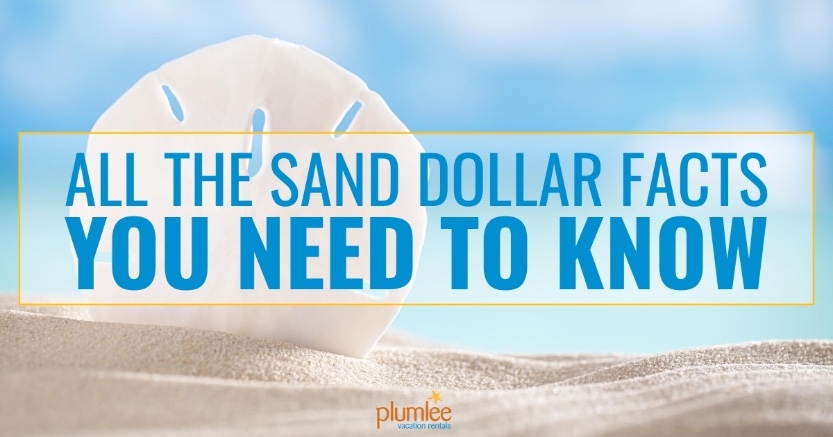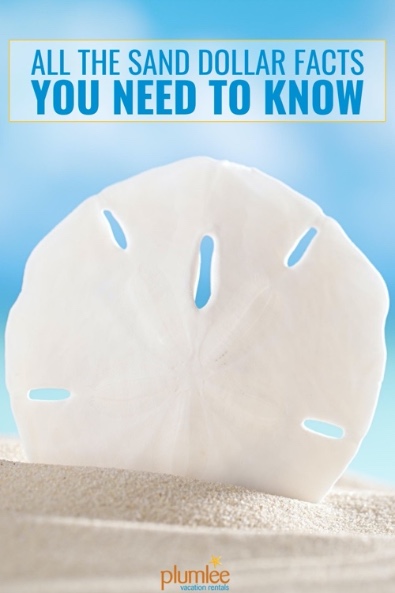
Have you ever been strolling the sands or wading through the Gulf of Mexico waters during your Indian Rocks Beach, Florida vacation when you happen upon a sand dollar? It may be right there on the surface of the sand, or you may find one by swimming or wading deeper out to a sandbar and wiggling your toes beneath the sand. Either way, it’s a pretty cool find. Here are some interesting sand dollar facts you may not know. Use these fun facts for a quick and easy science lesson with the kids, and then set off to find some sand dollars during your Florida Gulf Beach vacation. Here’s what you need to know!
Fun Sand Dollar Facts
Here are a few fun and amazing facts about sand dollars. They got their name because of their resemblance to silver dollar coins. Share all this sand dollar trivia with your family and friends! If you are interested in learning more sand dollar facts, you can find them here.
Live sand dollars aren’t white.
You may be used to seeing white sand dollars in gift shops and in beachcombers’ collections, but live sand dollars here are on the Florida Gulf Coast are brown. Their fuzzy spines are covered in tiny bristles called cilia. When a sand dollar dies, its skeleton (also known as a test) is bleached by the sun and the small spines fade away.
Sand dollars can’t live away from water.
It’s illegal in the state of Florida to take a living sand dollar out of its natural habitat and home with you (just like any other living organisms you may find in shells). If you find a live one, gently place it back in the water near where you found it. Sand dollars can’t live more than a few minutes away from water, so it’s the right thing to do.
They’re related to sea stars and urchins.
Sand dollars are invertebrates in the class of marine animals known as echinoids, or spiny-skinned creatures. Their relatives include sea lilies, sea cucumbers, sea biscuits, sea stars (also known as starfish), and sea urchins.
They eat with their hair.
Sand dollars use those tiny bristle-like cilia to move food to their mouth in their center, bottom side. Their jaws have five teeth-like sections to grind up food, which they may do for up to 15 minutes before swallowing. It can take two days for food to digest.
Sand dollars eat a lot of different things.
They usually eat microscopic algae, but a sand dollar’s diet can also include copepods, crustacean larvae, and other tiny animals. They capture plankton with spines and pincers (pedicellariae) on their body surfaces. A tiny teepee-shaped cone of spines bunched up on a sand dollar’s body marks where captive amphipods or crab larvae are being held for transport to the mouth.
Sand dollars move using their pores.
Sand dollars have five sets of pores arranged in a pattern like that of flower petals. The pores move water and gas in and out to allow for movement. When the water is still, sand dollars may stand on one end with the other end buried in the sand. But when the water gets rough, they lie flat or burrow under the sand to hold their ground.
Sand dollars have very few predators.
In the big scheme of things, sand dollars actually have very few predators. Since sand dollars have a hard skeleton and few edible parts, not many animals bother them. Sea gulls, starfish, crabs, octopi, and only a few species of fish will contend for this spiny snack.
You can tell their age by their rings.
Similar to counting rings on a tree stump, you can count the growth rings on the plates of a sand dollar’s test (remember, that’s their skeleton) to see how old the animal is. They usually live for six to 10 years. So next time you find one, remember to count its rings!
See Sand Dollars for Yourself and Learn More
This is a great video taken this year on the Florida Gulf Coast (when the beaches were still closed) that summarizes and expands upon the sand dollar facts we just talked about. Check out what these darlings look like in the water and on the beach—and learn to quickly spot the difference between a live or dead sand dollar. Enjoy!
How to Clean and Harden Sand Dollars for Your Collection
Once you’ve found a few sand dollar skeletons, then it’s time to pretty them up and get them prepared for your beachcombing collection. Here’s how to do it.
- Place sand dollars in fresh water in a flat baking dish and let them soak. They should be side by side, not on top of each other. This will remove the outer layer of dirt and organic material. Gently rinse by changing out the water.
- Add a bleach solution to the dish, and let the sand dollars soak a few minutes. The mixture should be a lower concentration of bleach to water than seashells, because they are more fragile. The ratio is 1:3, or 25% bleach to water.
- Only leave them in the solution a few minutes, or they will crumble. If they don’t completely come clean you can put them on a window sill to let them be bleached by the sun.
- After drying, they can be hardened with a mixture of 50% white school glue (like Elmers) and 50% water. You can also use a craft glaze like Mod Podge for a similar effect.
- Place the sand dollars on wax paper, so they don’t get glued to the surface they’re on. The glue mixture will pass through the sand dollars.
- Use a paint brush or small sponge to put the glue mixture on a sand dollar. Sand dollars are very porous and will absorb it. Let it dry, and repeat. Then turn the sand dollar over, and do the same on the other side.
have you ever found any sand dollars during your indian rocks beach vacation?
We want to know!





